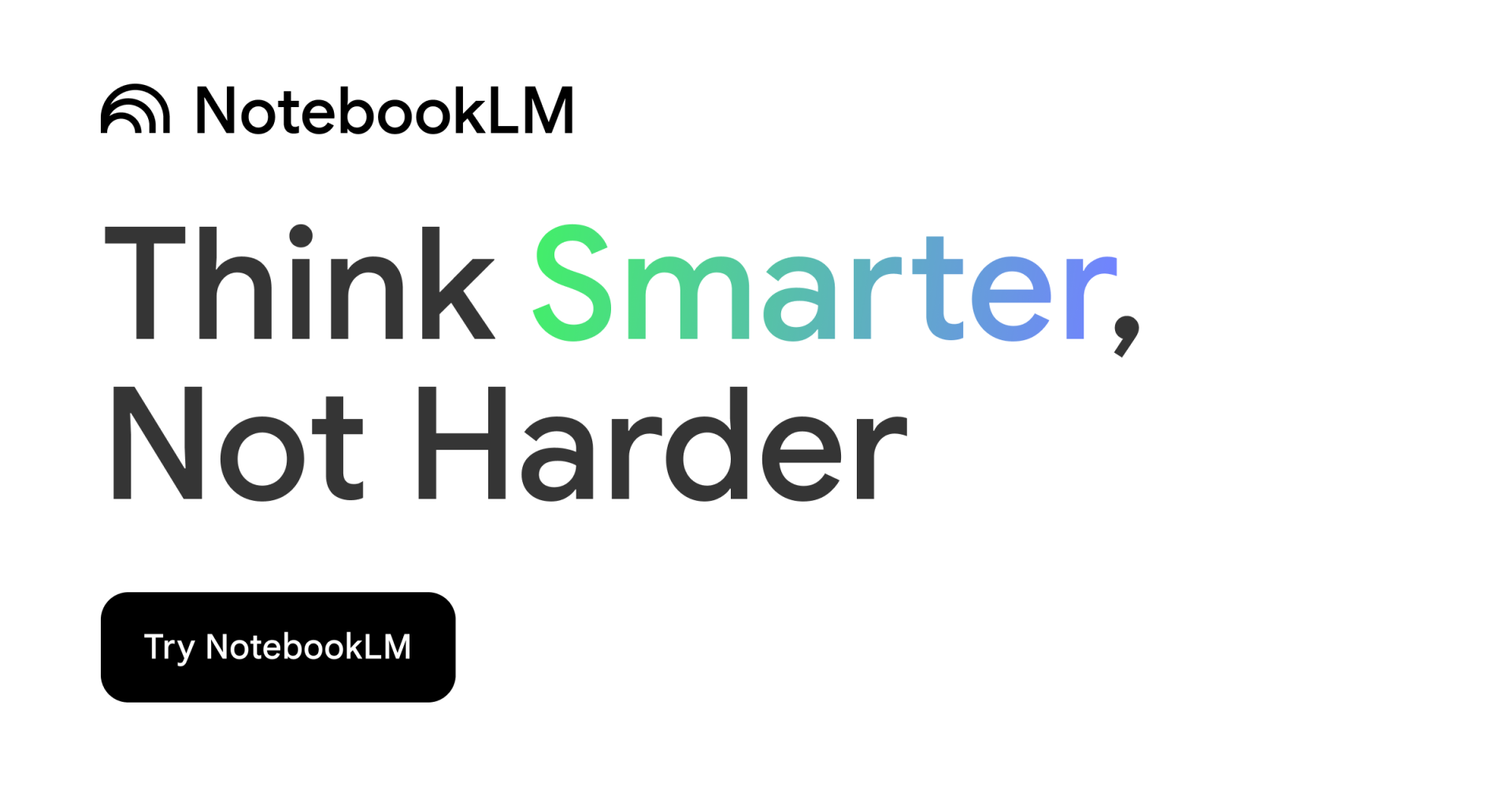Key Takeaways
What is NotebookLM? NotebookLM is a Google-developed AI research tool that helps users analyze, understand, and extract insights from their uploaded documents, primarily serving researchers, students, and knowledge workers.
- 🔍 Source-grounded AI only analyzes uploaded materials, minimizing hallucinations and inaccuracies
- 📚 Impressive capacity with support for up to 50 sources and 500,000 words per source
- 🎧 Unique AI podcast feature creates natural-sounding conversations about your documents
- 📋 Excels at summarizing complex materials and answering specific questions with source citations
- 🔄 Not a traditional note-taking app but a research assistant focused on document analysis
- ⚠️ Limited customization and cross-notebook connectivity restricts complex knowledge management
- 🆓 Currently available completely free to all users
This review covers: features, integrations, customization, hosting, pricing, pros and cons, and real-world use cases.
What is NotebookLM?
NotebookLM is a research and note-taking application developed by Google that uses artificial intelligence, specifically Google Gemini, to help users analyze and interact with documents they upload. Unlike traditional note-taking apps, NotebookLM focuses on understanding and extracting insights from source materials rather than organizing user-created content.
Use Cases
- 🎓 Academic Researchers and Students: Analyze research papers, create study guides from textbooks, generate literature reviews across multiple papers, and convert complex content into audio formats
- 🏢 Business Analysts and Professionals: Conduct comparative analysis of reports, perform competitive analysis, build project proposals from multiple sources, and identify patterns in large data sets
- 📝 Content Creators and Writers: Research topics across multiple sources, convert research into structured outlines, generate discussion points, and create audio content from written materials
- 🧠 Personal Knowledge Management: Analyze journal entries for patterns, build subject-specific knowledge libraries, create FAQs from research materials, and streamline learning of complex topics
Ease of Use and User Interface
🧩 Interface Structure Clean, straightforward layout with three main panels: left for sources selection, center for workspace, and right for suggested questions and additional features.
🚶♂️ Navigation Experience Intuitive design despite NotebookLM’s unique approach to document analysis. The chat interface at the bottom provides a familiar way to interact with documents.
🆕 Onboarding Process Minimal but sufficient guidance allows users to quickly upload documents and receive immediate AI insights.
⚠️ Customization Limitations Lacks options to adjust layouts, create custom organizational systems, or develop personalized workflows, prioritizing functionality over flexibility.
AI Research Capabilities
📊 Document Summarization Fast and comprehensive extraction of main points from even lengthy technical materials, providing excellent starting points for understanding complex documents.
❓ Question Answering Natural conversation interface allows users to interrogate documents with responses that include source citations for verification. Particularly effective when synthesizing information across multiple sources.
📋 Content Generation Creates structured content like study guides, FAQs, and briefing documents from uploaded materials, presenting information in more accessible formats.
🔍 Source-Grounded Approach Significantly reduces “hallucinations” by only referencing uploaded documents, acknowledging limitations rather than inventing answers when uncertain.
⚖️ Comparative Analysis Shows particular strength in comparing multiple perspectives, identifying contradictions, and synthesizing complementary viewpoints across documents.
🎙️ Podcast Generation Creates surprisingly natural conversations between two AI voices discussing uploaded content, with realistic cadence and conversational flow – particularly useful for auditory learners.
Document Support and Import Options
📄 Supported Formats Handles a wide range of document types including PDFs, Google Docs, web pages (via URL), YouTube video transcripts, text files, and other common formats.
⬆️ Import Process Simple drag-and-drop functionality or direct URL pasting makes adding content straightforward. Automatically extracts relevant text from web pages and videos.
📈 Capacity Limits Generous allowance of up to 50 different sources with each containing up to 500,000 words (25 million words total) exceeds typical research needs.
⚠️ Document Updates Creates static copies of uploaded documents, requiring manual refresh if original sources change, which may cause issues with actively developing materials.
🖼️ Non-Text Elements Adequate but limited handling of visual content. Can process text in images via OCR but doesn’t analyze charts or graphs with the same depth as textual content.
Organization and Search Features
📓 Notebook Structure Uses independent notebooks that function similarly to folders, keeping projects separate but limiting cross-project research since notebooks don’t connect.
✏️ Note Management Automatically adds AI-generated content (summaries, study guides) to notes section while allowing users to add their own text notes.
🔍 Search Capabilities Effective within individual notebooks but lacks advanced tagging or linking capabilities found in dedicated note-taking apps.
📌 Organizational Options Notes can be saved, pinned, and cataloged, but organizational schemes are limited compared to specialized knowledge management tools.
📚 Source Selection Useful feature allowing users to include or exclude specific documents for each query, enabling more targeted analysis and helping manage information overload.
Collaboration Tools
🤝 Collaboration Limitations Basic capabilities compared to dedicated collaborative platforms, designed primarily for individual use rather than team research.
🔄 Sharing Options Relies on Google ecosystem integration, particularly through Google Drive, allowing teammates to analyze the same materials in their own NotebookLM instances.
⚠️ Team Research Constraints Functions better as a personal research assistant than a collaborative workspace, with collaboration happening outside the platform rather than within it.
👥 Multiple Perspective Integration Significant limitation for research teams requiring tight integration of multiple human collaborators, despite excelling at synthesizing information from multiple document sources.
Export and Integration Options
📤 Export Functionality Straightforward but limited options for saving and exporting notes, with basic formatting and organization capabilities.
🔄 Google Integration Primary integration with Google’s ecosystem, particularly Google Drive and Google Docs, creating a natural extension for existing Google users.
🔌 Third-Party Connections Limited integration with non-Google platforms, lacking dedicated plugins or connections to specialized research tools or citation managers.
🎧 Audio Exports Allows downloading of AI-generated podcast files, providing useful options for those wanting to listen to summaries away from their computer.
⚠️ Workflow Integration May require additional steps to incorporate NotebookLM insights into broader workflows for users dependent on non-Google platforms.
Data Privacy and Security
🔒 Privacy Approach Content uploaded to NotebookLM is not used to train underlying AI models, providing important assurance for sensitive or proprietary information.
🛡️ Source-Grounded Security All AI responses based solely on user-uploaded documents gives control over information sources referenced by the AI.
🔐 Security Infrastructure Benefits from Google’s broader security infrastructure and compliance standards as part of the Google product ecosystem.
⚠️ Sensitive Materials Users working with highly confidential information should review Google’s specific terms before uploading, as extremely sensitive data might be better handled in air-gapped environments.
Performance and Reliability
⚡ Processing Speed Solid performance even with large document sets, quickly processing uploads and generating responses with minimal delay.
📊 Response Accuracy Enhanced reliability through source-grounded approach that reduces hallucinations, with the AI acknowledging limitations rather than inventing responses to unanswerable questions.
📌 Citation Transparency Verification feature builds trust by allowing users to check original context of information sources to ensure proper interpretation.
🎧 Resource-Intensive Operations Audio generation takes longer (typically around five minutes) but delivers impressive quality without significantly disrupting research workflow.
Help and Support Resources
📚 Documentation Status As a relatively new tool, dedicated support resources are still developing, with no comprehensive documentation mentioned in research materials.
❓ Support Channels Users likely have access to Google’s general support, but specialized assistance for NotebookLM’s unique features may be limited.
🧭 In-App Guidance Basic guidance provided through suggested questions and pre-set options in the Notebook Guide serves as a form of in-application support.
🎥 Community Resources User-created video tutorials demonstrate basic functionality, but official comprehensive guides were not referenced, suggesting reliance on community-generated resources.
Pricing and Access
💰 Current Pricing NotebookLM is currently available for free with no information about future paid tiers mentioned in research materials.
🌎 Availability Initially limited to US users during experimental phase but released more broadly in October 2024.
📊 Capacity Value Generous limits of 50 sources with up to 500,000 words each provide ample capacity even at the free tier, exceeding typical research project needs.
🔑 Access Requirements Users need a Google account to access NotebookLM, simplifying management for existing Google users but requiring account creation for others.
Summary
- 🔑 NotebookLM transforms document research by using AI to extract insights, answer questions, and generate summaries from user-uploaded content
- ⚙️ The source-grounded approach prevents hallucinations by analyzing only your documents rather than pulling from external knowledge
- 💡 Perfect for academic research, literature reviews, competitive analysis, and transforming complex information into digestible formats
- ✅ The AI podcast feature creates a unique way to absorb information through natural-sounding audio conversations
- ❌ Limited customization options and inability to connect notebooks across topics restricts complex knowledge management
- ✅ Source-grounded AI minimizes inaccuracies and hallucinations
- ✅ Generous document capacity handles extensive research projects
- ✅ Excellent source citation makes verification simple
- ✅ Natural-sounding AI podcast feature offers alternative learning format
- ✅ Currently free with substantial capacity limits
- ✅ Handles multiple document formats including YouTube transcripts
- ✅ Clean interface requires minimal learning curve
- ✅ Privacy-focused approach keeps documents confidential
- ❌ Limited customization for organizing research and notes
- ❌ Notebooks can’t connect to each other, restricting cross-topic research
- ❌ Basic collaboration capabilities compared to team-focused tools
- ❌ Few integration options with non-Google platforms
- ❌ Not designed for personal note creation and organization
- ❌ Minimal formatting options when exporting notes
- ❌ Support resources still developing for advanced use cases
- ❌ Static copies of documents require manual updates
Frequently Asked Questions
How does NotebookLM differ from traditional note-taking apps like Notion or Obsidian?
NotebookLM focuses on analyzing and extracting insights from uploaded documents rather than organizing user-created notes. While Notion and Obsidian excel at structuring information and building knowledge bases, NotebookLM specializes in understanding existing content. Many users find value in using NotebookLM alongside their preferred note-taking app rather than as a replacement.
What file types can I upload to NotebookLM?
NotebookLM supports various file formats including PDFs, Google Docs, web pages (via URL), YouTube videos (it extracts the transcript), text files, and other document formats. You can upload content by dragging and dropping files or pasting URLs directly into the platform.
Does NotebookLM use my documents to train its AI models?
According to Google, NotebookLM does not use uploaded documents to train its AI models. The tool makes a static copy of your documents solely for answering your specific questions, providing privacy assurance for sensitive research materials.
What happens if I update a source document after uploading it to NotebookLM?
NotebookLM creates a static copy of your documents at the time of upload. If you make changes to the original document, you’ll need to manually refresh the source in NotebookLM to incorporate those updates. The platform doesn’t automatically track changes to original files.
How accurate is the podcast feature in NotebookLM?
The podcast feature creates surprisingly natural-sounding conversations between two AI voices discussing your documents. While impressive in its realistic cadence and conversational flow, the content sometimes transitions between topics in a somewhat jarring manner. The feature works best for presenting overviews of topics rather than deep technical discussions.
Can I access NotebookLM on mobile devices?
The research materials don’t specifically address mobile access. As a web-based Google tool, NotebookLM likely functions on mobile browsers, but the experience may be optimized for desktop use given the research-focused nature of the platform.
How does NotebookLM compare to ChatGPT for research purposes?
NotebookLM is source-grounded, meaning it only uses information from documents you upload, reducing hallucinations. ChatGPT accesses a broad knowledge base but may introduce information not in your research materials. NotebookLM also provides better source citations according to user reports, making verification easier. For specific document analysis, NotebookLM offers more targeted insights, while ChatGPT may be better for broader exploration.
Ready to try NotebookLM? Visit the official site



